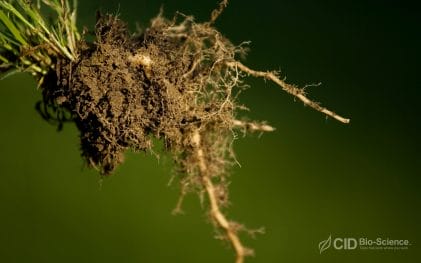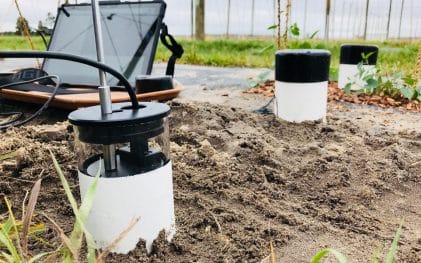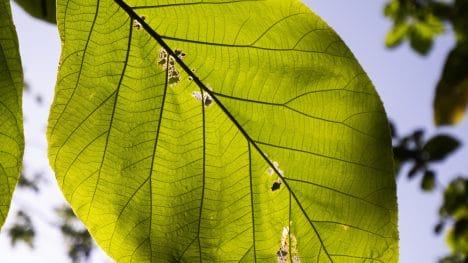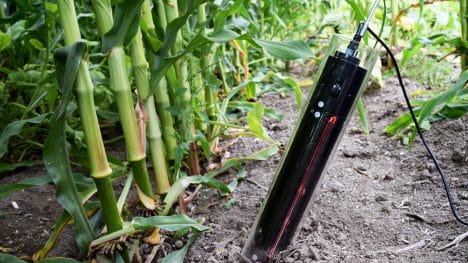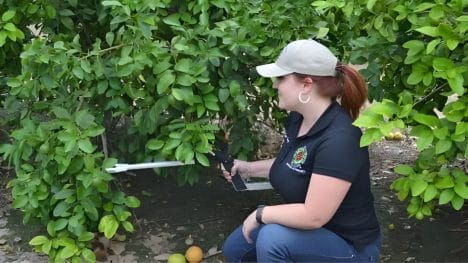Articles
How Does the Red-to-Far-Red Fluorescence Ratio Reveal Plant Stress?
The red-to-far-red fluorescence ratio is sensitive to changes in environmental and growing conditions; therefore, it can be used as an early indicator of plant stress. Photosynthesis, especially the sensitivity of photosystem II (PS II) to stress, is leveraged while using the ratio. The red-to-far-red ratio has several practical applications in precision agriculture and in developing… Continue reading…

Additional reading
CI‑110 Plant Canopy Imager vs Drone‑Based LAI Measurements: Which gives you more for your money?
A plant canopy imager has become a core tool for crop scientists who want quick, reliable leaf area index (LAI) measurements in the field. Many research teams now debate whether handheld canopy instruments or drone-based LAI models offer better value. Both approaches collect important canopy structure data, but they differ in cost, accuracy, workflow, and… Continue reading…
CI‑203 Handheld vs CI‑202 Portable: Trade‑offs in Mobility and Precision
Choosing the right laser leaf area meter can influence how efficiently researchers collect, analyze, and interpret plant morphology data. CID Bio-Science offers two flagship models, the CI-203 Handheld Laser Leaf Area Meter and the CI-202 Portable Laser Leaf Area Meter, both designed to provide fast, high-resolution, non-destructive measurements in the field or lab. While they… Continue reading…
CI‑110 vs LAI‑2200C: Can CID’s System Outperform a Hemispherical Camera Approach?
When it comes to understanding canopy structure and light distribution, precision matters. Researchers in forestry, agronomy, and ecology depend on accurate Leaf Area Index (LAI) data to model photosynthesis, evaluate growth, and manage ecosystems. Traditionally, devices like the LAI-2200C from LI-COR have dominated this space with hemispherical sensor arrays. CID Bio-Science’s CI-110 Plant Canopy Imager… Continue reading…
CI‑600 In‑Situ Root Imager vs Traditional Minirhizotron: Time, Labour & Insights
The CI-600 In-Situ Root Imager is a modern solution for non-destructive root observation and data collection. Compared to traditional minirhizotron systems, it delivers faster image capture, greater consistency, and richer insight into below-ground dynamics while cutting the time and labour typically associated with root research. The Challenge of Root Observation Roots drive plant performance, yet… Continue reading…
CI‑340 Handheld Photosynthesis System vs LI‑COR 6400XT: A Researcher’s Perspective
Accurate photosynthesis measurement is vital for understanding plant physiology, crop productivity, and responses to stress. Portable gas exchange systems have become essential in both field and controlled studies. Among the leading instruments in this field of photosynthesis measurement systems are CID Bio Science’s CI 340 Handheld Photosynthesis System and LI COR’s LI 6400XT. Both provide… Continue reading…
What Affects Leaf Area Index Estimation Accuracy in Field and Remote Methods?
TLDR Leaf area index (LAI) field methods are classified into two categories: destructive, direct methods and non-destructive, indirect methods. LAI estimations by the indirect method across the ecosystem, plant, and species are lower than those obtained directly. Clumping, non-random leaf distribution in the canopy, seasonality, and inadvertent inclusion of contributions by woody parts can affect… Continue reading…


